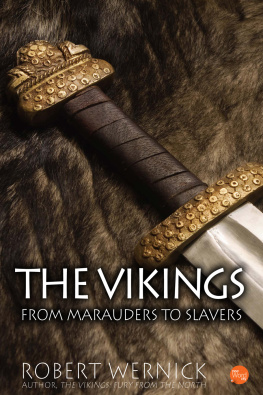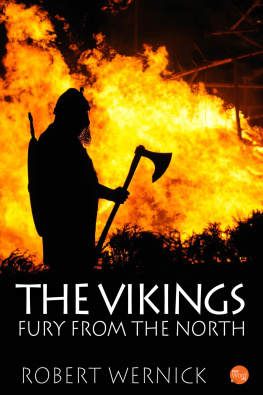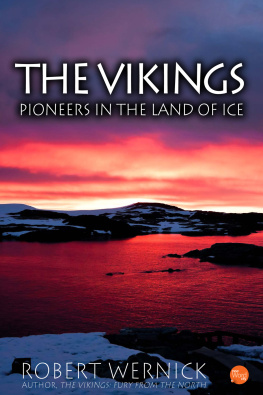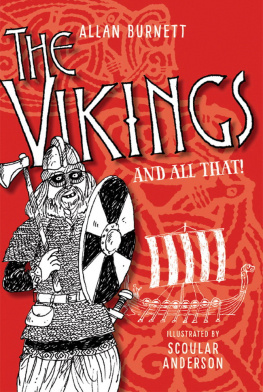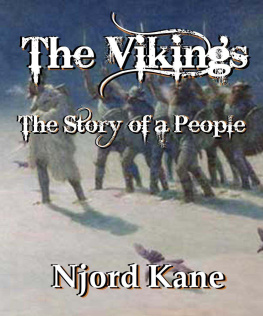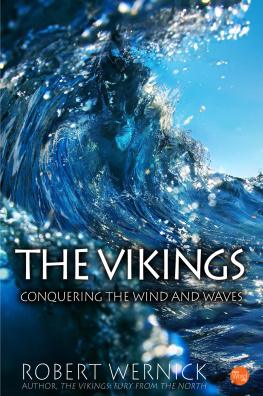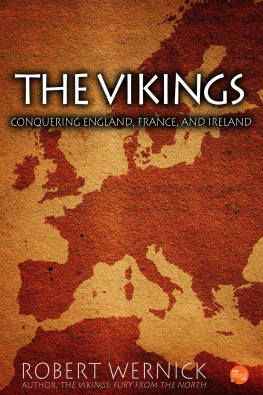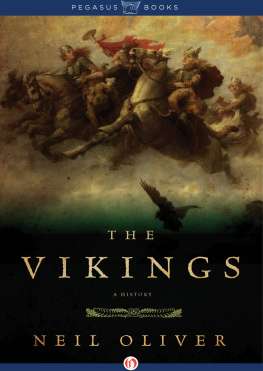The Vikings were fond of portraying themselves as the ultimate warriors. And quite possibly they were. But there was much more to them than this one-dimensional image. They were, in fact, as much merchants as marauders. Their battle swords went hand in hand with the tiny and delicate scales they used to measure the silver that represented commercial gain. And it was in their mercantile endeavors that they made some of their strongest contributions to civilization.
The Scandinavians were traders long before they became Vikings. The initial source upon which Scandinavian commerce was founded was a marvelous substance that had come as a godsend to the eastern shore of Jutland and the southern Baltic coast. This was amber - the clear, fossilized resin of pine trees that had died millions of years before on land that was, in this case, covered by the waters of the Baltic. The sea washed it ashore in chunks, and it eventually accumulated in such quantities that several thousand pounds of amber could be extracted from an area encompassing only a few acres. Amber was the diamond of its day, fetching premium prices from European ladies, who loved the golden play of light on the strings of amber beads that they wore on their bosoms. It was rendered even more valuable by the fact that when rubbed it took on a highly magnetic charge, a property that seemed magical. In fact, the English word electricity is derived from the Greek elektron, which means amber.
The Vikings traded in amber almost from the start of their history. As early as the second millennium B.C., they were carrying it in crude crafts down the coast of the North Sea and into central and southeastern Europe by way of the Elbe and other rivers. As the Bronze Age faded into the Iron Age, the variety and range of commerce expanded in relation to advances in Norse shipbuilding. The Viking longship and its commercial cousins, the variously sized knarrs, all of them highly maneuverable, enabled the Vikings to probe trade routes never before open to merchant traffic.
Indeed, it required no conflict of identity for the Vikings to lay down their swords and pick up their scales. To realize a profit from their plunder, the Norse raiders sold it in the marketplace. It was said of one of the characters in a saga - a merchant named Thorolf Kveldulfsson - that he divided his time between Viking raids and trading voyages and that the two were often indistinguishable: A Viking merchant bound for the marketplace did not hesitate to turn pirate if he spotted a weaker, commercial-shipping vessel along the way.
This raid-and-trade duality was manifest in many ways and on many occasions. When Viking freebooters established a settlement on the island of Noirmoutier near the estuary of the River Loire in 842, they had more in mind than a base for raids in France. Noirmoutier was situated in an area of lush vineyards and marshes whose waters, when drained and channeled into separate, shallow basins, could be allowed to evaporate leaving layers of salt. Since Roman times, Noirmoutier had been a center for trade in wines and salt - and the Vikings simply took over the franchise.
Three years later, Danes directed by a king named Horik staged one of the most spectacular of all Viking invasions. Horik was an exceedingly ruthless leader - as evidenced by the fact that he survived as the ruler of a notably unruly people for twenty-seven years. He was also of eminently pragmatic mind, and he realized that both power and wealth could be better attained by massed forces than by the individual, glory-seeking forays that the Vikings so loved.
In 845, Horik assembled a fleet of some 600 vessels - which, even allowing for generous exaggeration, must surely have been a fearsome armada. The target was Hamburg, key to the Elbe, and Horiks Danes burst through its massive quadrangle wall in a frenzy of destruction. When they were done, according to accounts of the time, no single stone in the town remained standing upon another. Yet, they left untouched the most vulnerable target of all: the wooden houses and shops of the merchants quarters along the river outside the wall. The omission must have been deliberate - probably Horiks direct order. Whether any Viking actually made use of the market area is unknown; if they did, it was only briefly. For Horiks main force soon ventured up the Elbe into the interior, where it was soundly defeated and driven from the land by an army of Saxons.
On such occasions, Viking raiders were clearly instruments of calculated commercial policy - and, as such, they were a vital force, a light leading toward the end of the Dark Ages that had befallen the world with the collapse of the Roman Empire and with the eighth-century Muslim assault on the Mediterranean world. Communications were disrupted, commerce withered, and the kingdoms of Western Europe entered a long gloomy time of despondence. Europe, which had boasted powerful provinces with opulent courts and thriving cities, became, for the most part, a collection of backward, subsistence-level communities, each ruled by a petty feudal lord whose vision seldom extended further than his neighbors barn.
To this stagnant society the Northmen in their swift ships brought mobility, quickening the sluggish pace of life and reopening the windows of trade. In the Old World, the Vikings were not discoverers in the true sense of the word - that would come with their voyages to the New World. Instead, the Viking achievement in Europe was to take a patchwork of separate and disparate waterways - many of them long unused or even forgotten - and organize them into a network within which people and goods might move from the Middle East to the British Isles.
Knotting the strands of this commercial network and making a whole of the parts were the Norse trading towns, shrewdly situated so as to provide accessibility to merchants as well as tactical protection against marauders - yet also located, with a sweeping strategic sense, at vital commercial crossroads.
In foreign lands, the Vikings often set up fortified strongholds and later converted them to market towns, as was the case with Cork, Dublin, Limerick, Waterford, and Wexford in Ireland. Sometimes established towns - York in England and Rouen in Normandy, for example - were turned by the Northmen to their own mercantile use. In Russia, the settlements of Kiev, Novgorod, and Rostov became Viking trading outposts. Within Scandinavia itself, where Viking preyed upon Viking, care was taken to locate the towns where they were safe from easy attack. Thus, Norways Kaupang lay on the shores of a bay where islands, shoals, and narrow channels made the approaches slow and hazardous for marauding strangers and effectively prevented surprise assault. Denmarks Hedeby, the oldest and largest of the towns, was even more favorably situated at the southern base of the Jutland peninsula, separated from the open Baltic by twenty-five miles of the Schlei inlet and guarded by elaborate man-made defenses. But of them all, the town with the most secure natural position and the most exciting trade was Swedens Birka, located deep in the heart of the land, along waterways that gave access to both the treasures of the North and those of Russia and the East.
The town of Birka was probably founded around the year 800 by Vikings from Sweden, who used it both as a marketplace for local commerce and as a collection point for the rich northern fur trade that was then springing up. But such was Birkas location and such was the rise of Viking trade that, within a period of twenty-five years, the town became a leading center whose commercial arteries spread for hundreds of miles to all points of the compass.
Birka was located on an expansive lake called Mlaren, which offered seven key entrances and exits. The Vikings were able to travel east to the Gulf of Finland and on the Volga River, or east and then north to rivers that would take them to the White Sea or south to the prosperous Gotland and Hedeby, and beyond to England and Frisia, or west by at least two river-and-lake routes into Middle Sweden, or north by the sea or by a series of lakes, rivers, and glacial moraines by boat, horse, and foot to abundant hunting grounds.
Next page
